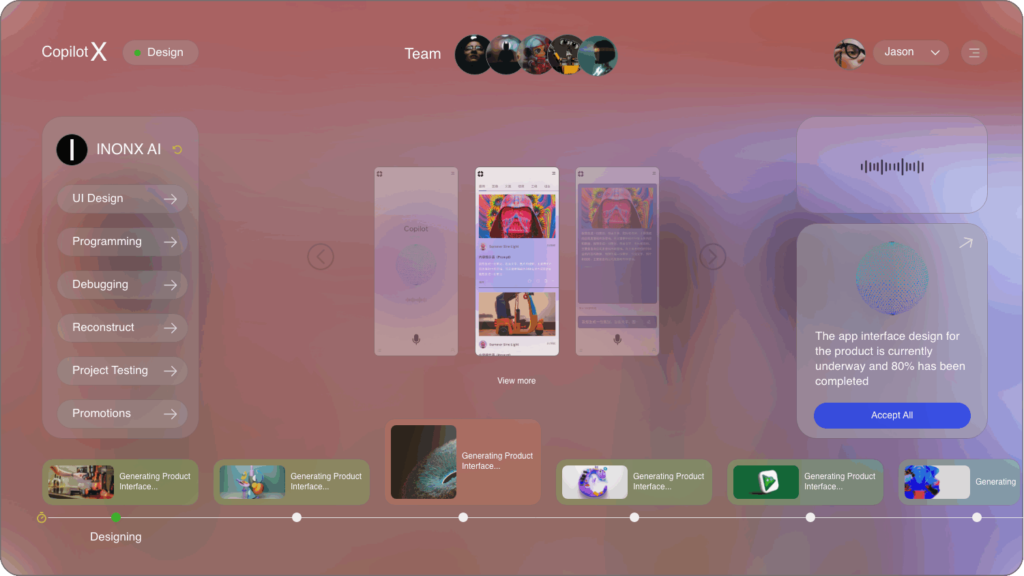As the realm of artificial intelligence continues to rapidly evolve, 2024 has already seen remarkable advancements that promise to reshape industries, enhance productivity, and unlock new possibilities. From the launch of sophisticated large language models to tools that integrate advanced AI across various sectors, the developments are as impactful as they are groundbreaking. This article takes a closer look at the most significant advancements in AI reported this year, including Google’s Gemini 1.5 Pro, innovative tools and APIs, emerging technologies targeting specialized use cases, and remarkable products tailored for enterprise and cybersecurity sectors.
The launch of **Google Gemini 1.5 Pro** has certainly made waves in the AI community. This latest large language model boasts impressive multimodal capabilities, allowing it to process and generate content in text, images, and other formats seamlessly. Its design caters to a wide range of applications, from conversational interfaces to creative content generation. One of the standout features of Gemini 1.5 Pro is its extended context understanding, enabling it to recall and utilize information from past interactions more sustainably. This makes it not just a tool for generating responses but a reliable partner in user engagement (Google AI Blog, 2024).
.
Following the footsteps of Gemini, several other AI models are emerging, each with unique features designed to cater to specific needs across industries. For instance, OpenAI’s latest models continue to demonstrate enhancements in human-like conversational abilities and problem-solving skills. These advancements in LLMs (Large Language Models) highlight a broader industry trend toward creating AI systems that understand nuances and context better, thereby improving their usability in various domains, including education, healthcare, and business automation (The Verge, 2024).
.
In addition to advanced models, new tools and APIs integrating AI are changing how businesses operate. For example, **Verity**, a digital assistant tool designed for healthcare professionals, has recently been updated with AI capabilities that streamline patient interactions. With its improved natural language processing, Verity helps healthcare providers create more personalized patient experiences while reducing administrative burdens. Its integration into electronic health records and telehealth platforms has proven invaluable, especially in overcoming challenges posed by the COVID-19 pandemic (Healthcare IT News, 2024).
.
Moreover, tools that leverage **Sensor Technology in Robots** combined with AI are becoming increasingly prevalent across manufacturing and logistics. These advancements lead to smarter robotics systems that can automatically adapt to changing environments and tasks. AI-driven robots equipped with advanced perception algorithms can process sensory data efficiently, allowing them to make autonomous decisions in real-time. For example, some logistics companies are deploying AI-powered warehouse robots that utilize precise radar perception technology to navigate spaces without human oversight (Robotics Business Review, 2024).
.
The ongoing focus on creating AI that serves specialized use cases has yielded noteworthy innovations. One such area is the development of **more reliable and debiased LLMs**. Increasing public scrutiny over biases embedded in AI models has led meaningful research toward making these technologies more equitable. Institutions and companies have started to invest in frameworks that allow for the auditing and fine-tuning of algorithms, ensuring that AI systems can function in diverse environments without unintentionally perpetuating stereotypes (IEEE Spectrum, 2024).
.
Furthermore, the emergence of innovative AI products in 2024 highlights a concerted effort to bolster enterprise capabilities amid rising cybersecurity threats. Leading cybersecurity firms have developed AI-driven solutions that are adept at identifying patterns in data traffic to detect anomalies indicative of potential breaches. These products utilize machine learning algorithms that continuously evolve to recognize new threats based on real-time insights, ultimately reducing response time during attacks and enhancing overall system security (Cybersecurity Today, 2024).
.
As AI finds its footing in creative industries, we witness products tailored for artists and content creators. Advanced AI tools are now assisting creators in writing, generating music, and even producing artwork. Innovations have led to collaborative AI applications that learn from individual creators’ styles and preferences to provide tailored suggestions. Platforms like DALL-E and new entrants promote an interactive experience where artists can interact with AI tools, refining and personalizing their creative outputs (Wired, 2024).
.
The impact of these advancements extends well beyond technological marvels. In the education sector, AI is transforming how students learn. Intelligent tutoring systems that adapt to individual learning needs and preferences are becoming more commonplace, enabling personalized learning experiences that foster better engagement and outcomes. These tools harness the power of AI to analyze student performance data and provide actionable insights to educators (EdTech Magazine, 2024).
.
In the realm of **business automation**, AI tools are streamlining operations and increasing efficiency. Companies are investing in AI-driven solutions to automate repetitive tasks, from data entry to customer relationship management. The use of AI in contract analysis and supply chain management is also gaining traction, allowing organizations to reduce errors and make more informed decisions based on predictive analytics (Forbes, 2024).
.
As we look toward the future, the potential of AI continues to expand. Innovations revolving around human-AI collaboration, such as AI-enhanced decision-making systems, are becoming crucial in environments that require rapid response and analysis. The ongoing evolution of AI technologies, their incorporation into various sectors, and the ability to address existing challenges while adhering to ethical considerations form a promising landscape for the years ahead (MIT Technology Review, 2024).
.
In conclusion, 2024 is shaping up to be a transformative year for artificial intelligence, with significant advancements in large language models, innovative tools across industries, and specialized AI technologies that address contemporary challenges. As we continue to harness the capabilities of AI, it is essential to recognize its potential impact on society and ensure responsible development and deployment for a more equitable and efficient future.
### Sources
1. Google AI Blog. (2024). Introducing Google Gemini 1.5 Pro: The Next Frontier in AI.
2. The Verge. (2024). OpenAI Unveils Latest AI Models with Enhanced Conversational Skills.
3. Healthcare IT News. (2024). Verity: Revolutionizing Patient Interactions with AI.
4. Robotics Business Review. (2024). The Impact of Sensor Technology on Robotics.
5. IEEE Spectrum. (2024). Addressing Biases in Large Language Models: Trends and Innovations.
6. Cybersecurity Today. (2024). AI Solutions Elevating Cybersecurity Measures for Enterprises.
7. Wired. (2024). Creativity Meets AI: The New Tools for Artists and Content Creators.
8. EdTech Magazine. (2024). How AI is Reshaping Personalized Learning Experiences.
9. Forbes. (2024). Business Automation in the Age of AI: Opportunities and Challenges.
10. MIT Technology Review. (2024). The Future of Human-AI Collaboration in Decision-Making.


























